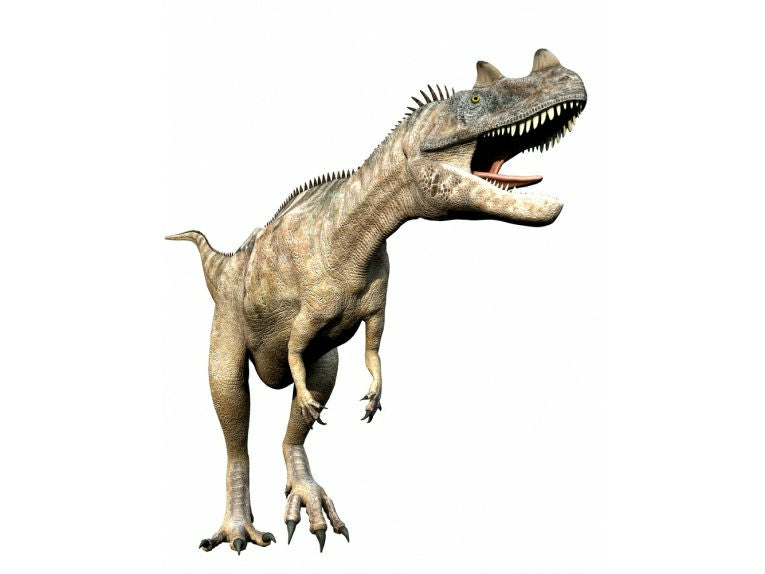Large bizarre theropod dinosaurs ruled Gondwanaland during the Cretaceous. They were top predators. However that was in the southern hemisphere. The Northern hemisphere (Laurasia) had our old friends, the Tyrannosaurids, and few of these abelisaurids.
In Patagonia, which was part of southern Gondwanaland, a very early complete (almost) example has been found from the middle of the Jurassic period, 40 million years before any relative. The climate seems to have restricted the explosively radiating group to the south of the huge continent, possibly because of the large desert in the way.
The ceratosaur stem group gave rise to these bizarre abelosaurids with odd shapes in Pangaea. The tectonics show Pangaea breaking up into Gondwanaland and Laurasia with few connections between the two large continental masses. That explains why the two predators didn't meet! Eobelisaurus mefi, shown in all its magnificence below, gives us many clues about how this successful group spread in the south of Gondwanaland and produced many species, but unfortunately few fossils.

The Middle Jurassic abelisaurid, Eoabelisaurus mefi; Credit: Proceedings of the Royal Society B: Biological Sciences
As fossils of Jurassic theropods in the southern hemisphere have not been created often, this complete fossil represents a real success for Diego Pol and Oliver Rauhut from the Museo Paleontolo´gico Egidio Feruglio, in Trelew in Argentina and the Ludwig-Maximilians-University, in Munich, respectively. They publish today in the Proceedings of the Royal Society B: Biological Sciences and immediately caused dinosaur students' attention to shift from nearer the Triassic to the Jurassic/Cretaceous interface.
This fossil means that divergence of these creatures took place after the first flowering of the dinosaur dynasty. A further radiation of relatively modern dinosaurs in the Jurassic would have these monsters of Gondwanaland lording it over the rest of the reptilian fauna.
The later Cretaceous groups of abelosaurid had unusual skulls and tiny forelimbs, paralleling Tyrannosaurus. This early fossil has a more basic skull with a normal humerus in the forelimb, forearms like those of Ceratosaurus itself and the typical tiny "hands."

Limb proportions in three theropods, showing reduction of distal elements of the forelimb. Femur and forelimb of the basal theropod Dilophosaurus (left), basal abelisaurid Eoabelisaurus (middle) and the advanced abelisaurid Carnotaurus (right). Drawn to same femoral length for comparison.; Credit: Proceedings of the Royal Society B: Biological Sciences
Unfortunately, there are still too few fossils of abelosaurids to indicate how things went later in the Cretaceous, but Patagonia has come up trumps in giving us a magnificent clue about how life for this group began.
href="https://earthtimes.org/index.html">Scitech










